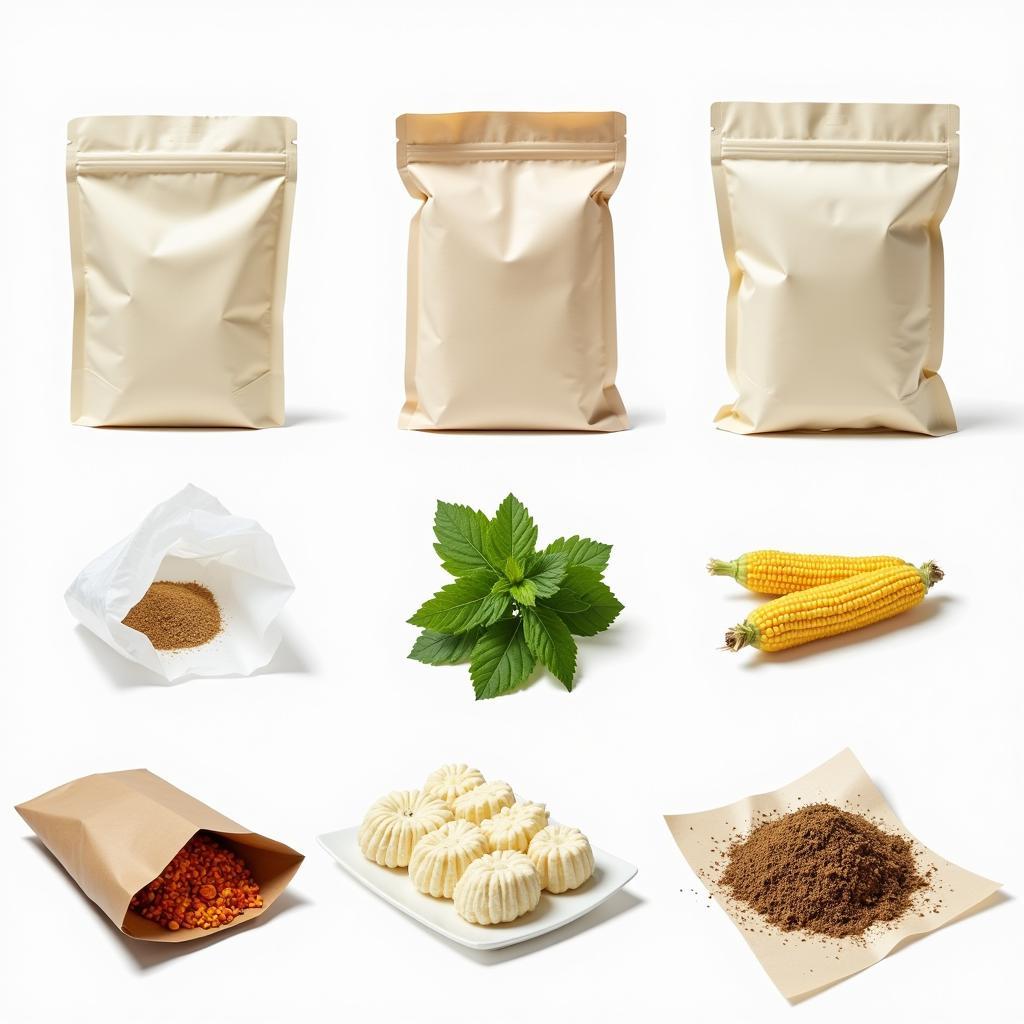Bags For Food Packaging are essential for preserving freshness, ensuring hygiene, and enhancing the overall presentation of food products. From the bustling markets to your kitchen pantry, these versatile containers play a crucial role in our daily lives. This guide delves into the diverse world of food packaging bags, exploring their types, benefits, and the innovative trends shaping the industry. After this introduction, explore our other informative resources like our packaging bags for food page.
Types of Bags for Food Packaging
The sheer variety of food packaging bags available can be overwhelming. Understanding their unique properties and applications is key to making informed choices.
Plastic Bags
Plastic bags, including polyethylene (PE) and polypropylene (PP), are widely used due to their flexibility, durability, and moisture resistance. They are ideal for packaging snacks, baked goods, and frozen foods.
Paper Bags
Paper bags offer a biodegradable and eco-friendly option. They are commonly used for carrying groceries, takeout meals, and bakery items.
Biodegradable and Compostable Bags
With growing environmental concerns, biodegradable and compostable bags made from materials like cornstarch and PLA (polylactic acid) have gained popularity. These bags break down naturally, reducing environmental impact.
Stand-Up Pouches
Stand-up pouches are convenient and visually appealing, perfect for displaying products on shelves. They are often used for packaging coffee, dried fruits, and liquids.
Benefits of Using Appropriate Food Packaging Bags
Using the right bags for food packaging offers numerous advantages, including:
- Preservation: Bags protect food from spoilage, extending shelf life and reducing food waste.
- Hygiene: Proper packaging prevents contamination and maintains food safety.
- Convenience: Bags facilitate easy storage, transport, and portioning of food.
- Branding: Custom-printed bags enhance brand visibility and attract consumers.
Choosing the Right Bag: Key Considerations
Selecting the right bag involves careful consideration of several factors. What are your specific needs and preferences?
Food Type
The type of food being packaged dictates the bag’s material and features. For example, oily foods require grease-resistant bags, while frozen foods need freezer-safe packaging.
Barrier Properties
The bag’s barrier properties against moisture, oxygen, and light are crucial for maintaining product quality.
Size and Shape
Bags are available in a wide range of sizes and shapes to accommodate different product dimensions and quantities.
Environmental Impact
Consider the environmental impact of the bag’s material and its recyclability or compostability. You can find resources for environmentally conscious options on our free shipping food gifts page.
Innovations in Food Packaging Bags
The food packaging industry is constantly evolving, driven by consumer demand and technological advancements.
Active Packaging
Active packaging incorporates materials that interact with the food to extend shelf life and enhance quality. For example, oxygen absorbers can be added to bags to prevent oxidation.
Intelligent Packaging
Intelligent packaging uses sensors and indicators to provide information about the product’s freshness and safety.
Sustainable Packaging Solutions
The focus on sustainability is driving innovation in biodegradable and compostable materials, as well as reusable packaging options. If you’re interested in pet food packaging, check out our birdie and louie cat food review.
Conclusion
Bags for food packaging are indispensable for preserving, protecting, and presenting food products. By understanding the various types, benefits, and key considerations, you can make informed decisions that meet your specific needs and contribute to a sustainable future. Choosing the right bags for food packaging is essential for any food business or individual. For more information, check out our guide on back country food.
FAQ
- What are the most common types of food packaging bags?
- How do I choose the right bag for my food product?
- What are the benefits of using biodegradable bags?
- What are the latest innovations in food packaging?
- Where can I find custom-printed food packaging bags?
- How can I reduce my environmental impact when using food packaging bags?
- What are the regulations regarding food packaging bags in my region?
 Biodegradable and compostable food packaging bags
Biodegradable and compostable food packaging bags
Are there specific considerations for packaging dry goods versus liquids? What are the best options for packaging pet food, like those discussed in our white bag of dog food article? Explore our website for more resources on food packaging.
Need help with your food packaging needs? Contact us at Phone Number: 02437655121, Email: [email protected] Or visit us at: 3PGH+8R9, ĐT70A, thôn Trung, Bắc Từ Liêm, Hà Nội, Việt Nam. We have a 24/7 customer service team.